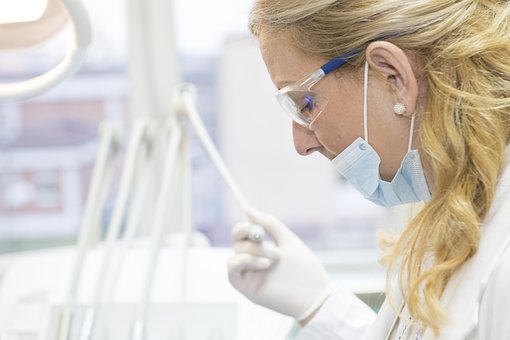As with most health conditions, there are several therapies for bacterial vaginosis. You will see a bacterial vaginosis treatment online whenever you look it up. Having the correct information on bacterial vaginosis and its treatment is crucial. This will serve as a guide when you check online for treatment protocols.
In this article, we will look at the causes of bacterial vaginosis. We will also examine the disease pathology and medicine.
This includes symptoms and practicable treatment protocols that are safe and effective. This promises to be an enjoyable, helpful and educative read. So, tag along as we discuss the medicine and science of bacterial vaginosis!
Understanding the Pathology of Bacterial Vaginosis
Bacterial vaginosis is a result of replacing the vagina’s normal microflora. Chief among these helpful bacteria is the Lactobacillus. This bacterium produces hydrogen peroxide in the vagina. It does this together with beneficial microbes in the vagina.
Fifty percent of women who fit the criteria for bacterial vaginosis remain asymptomatic. Yet, this illness is the most common cause of vaginal discharge or foul odor.
Reports have shown that 45 percent of the female population worldwide may have struggled with bacterial vaginosis once in their lifetime. In addition, recent research has linked the condition to maternal and fetal morbidity.
According to studies, bacterial vaginosis during pregnancy increases the risk of spontaneous miscarriage. Likewise, it can cause preterm labor and premature birth. It can also cause premature rupture of the membranes and amniotic fluid infection. Bacterial vaginosis is also a cause of postpartum endometritis and post-cesarean wound infections.
Risk Factors Bacterial Vaginosis
Bacterial vaginosis is a disease that can spread from one sexual partner to the next. Yet it is not a classical venereal disease. Instead, it occurs when one or more of the normal flora in the vagina are overgrown. Bacterial vaginosis treatment is crucial when there is an infection. It has a few risk factors that can be cured with these kinds of treatments
The risk factors for this condition include:
- several sexual partners
- douching
- a genetic deficiency in Lactobacilli bacteria
Common Symptoms Seen in Bacterial Vaginosis
Bacterial vaginosis (BV) affects up to 84% of persons without symptoms. If so, your symptoms might include the following:
- Vaginal discharge consisting of an off-white, grey, or greenish fluid
- Vaginal discharge with a “fishy” odor
- Painful or itching vagina
Like most other diseases, BV symptoms are essential to diagnosis. These symptoms look like other vaginal infections. So, a visit to the doctor may be life-saving in this condition.
Bacterial Role in Vaginosis
Only some of the germs found throughout the body are hazardous. Health issues can develop when harmful bacteria multiply in a body part.
Most bacteria in the vagina are beneficial. So, BV develops when there is a change in the vagina’s microflora.
Lactobacilli-producing bacteria should be present in the vagina. These produce lactic acid that acidifies the vagina. The acidic vaginal environment prevents bacterial growth.
Less Lactobacilli can result in the vagina becoming less acidic. This is because harmful bacteria can grow and flourish in the vagina if it is not acidic enough.
The relationship between harmful microbes and bacterial vaginosis is still unclear.
Complications Associated with Bacterial Vaginosis
Although BV is not harmful, it can raise your risk of developing other health problems.
General Health Complications
- Venereal Diseases. Diseases such as chlamydia and HIV increase one’s susceptibility to BV
- Postsurgical infections, such as those following some types of abortion or a hysterectomy
2.Obstetrical complications
Pregnancy-related BV problems could result in the following:
- premature or early delivery
- premature amniotic sac rupture during pregnancy loss
- postpartum endometritis, which is irritation or inflammation of the uterine lining following birth
- infection of the membranes around the fetus, known as chorioamnionitis
Premature delivery is higher when there is chorioamnionitis. If the baby survives, they have a greater chance of neonatal diseases and infections.
3. Fertility Problems
BV may increase the chance of having trouble getting pregnant. Also, it can raise health issues that could harm fertility.
Potential issues include:
- Infertility with a tubal component arises from injury to the fallopian tubes. The fallopian tubes (Salpinx) link the ovaries and the uterus.
- Pelvic inflammatory disease can cause significant side effects, such as infertility. It involves infection and inflammation of the upper female genital system.
- In vitro fertilization (IVF) failure: If a patient has BV, IVF procedures may have a lower success rate.
Therapeutics
Sometimes BV can resolve on its own. But it is easy to misdiagnose the condition’s symptoms. This is because signs and symptoms are like those in trichomoniasis or gonorrhea. Also, untreated BV can cause difficulties when a woman is pregnant.
So, obtaining a professional diagnosis is crucial in the treatment of BV. This is especially true during pregnancy.
Also, some types of abortion or hysterectomy issues may occur if BV is present. Therefore, some medical professionals recommend treating BV in everyone who undergoes these surgeries. This is irrespective of the presence or absence of BV in the patient.
Male partners often do not need therapy for this infection. Still, BV can spread from a male to many female sexual partners.
We look at a few BV treatment alternatives below.
1. Metronidazole (Flagyl, Metrogel-Vaginal, etc)
You can take this medication per os. You can also get metronidazole as a topical gel to insert into your vagina. Avoid alcohol throughout treatment and for at least one day after finishing therapy. This minimizes the risk of stomach upset, abdominal discomfort, or nausea. Please, refer to the product’s instructions for more information.
2. Clindamycin (Cleocin, Clindesse (Cleocin, Clindesse)
This medication comes as a vaginal cream (suppository). Clindamycin cream may weaken latex condoms. So, be careful when having sex during therapy.
3. Tinidazole (Tindamax) (Tindamax)
This drug is an oral preparation. Avoid alcohol while taking tinidazole. This is because it causes stomach discomfort and nausea, like oral metronidazole.
4. Secnidazole (Solosec) (Solosec)
It is crucial to take this antibiotic per os in a single dose. You can sprinkle the granules from a packet onto a soft food like applesauce, pudding, or yogurt. Consume this mixture within 30 minutes of its preparation.
Treatment of Bacterial Vaginosis in Pregnancy
Antibiotics are crucial in the treatment of bacterial vaginosis. Antibiotics are drugs that destroy bacterial infections. You may take the antibiotic by mouth or apply it as a cream or gel to your vagina. Antibiotic treatment for BV during pregnancy is safe for the unborn child. It also lowers your chance of contracting STIs.
In the case of BV:
- Take all your medications according to the prescription. Take it all if you do not have any symptoms or indicators.
- Help inform your female sex partners to take tests. Let them know you have BV.
- Suspend sexual relations until your treatment is complete.
- After your treatment, let your doctor know if you experience any signs or symptoms.
How to Reduce Risks of Bacterial Vaginosis
There are no definite strategies to prevent bacterial vaginosis (BV). This is because it is still subject to research. However, these actions could lower your risk:
- Do not douch. It alters the normal bacterial equilibrium in your vagina. Instead, take good care of your vulvar and vaginal areas.
- Keep anything that has touched your anus out of contact with your vagina. Sex toys and toilet paper both have the potential to spread bacteria from your feces to your vagina. After each use, make sure to clean the sex toys.
- Do not have too many sex partners. According to research, you risk developing BV if you have several sex partners.
- Use dental dams or latex condoms. Research suggests that sexual activity plays a role in BV, though it is unclear why.
- Wear underwear made of cotton or cotton-lined. In humid environments, bacteria
Conclusion
The treatment of bacterial vaginosis is crucial in cases of infection. The health risks that may ensue from this infection are grave. So, treating and getting rid of the condition is vital.
Treating the condition reduces the risk of contracting other diseases. Such diseases include C. trachomatis and N. gonorrhea. As well as T. vaginalis, M. genitalium, HIV and HPV.
Your health and well-being are crucial to your fitness and productivity. Thus, it would help if you looked up helpful and factious truths about your health and well-being.
For More Amazing Updates, Keep Visiting Trendy News magazine.


